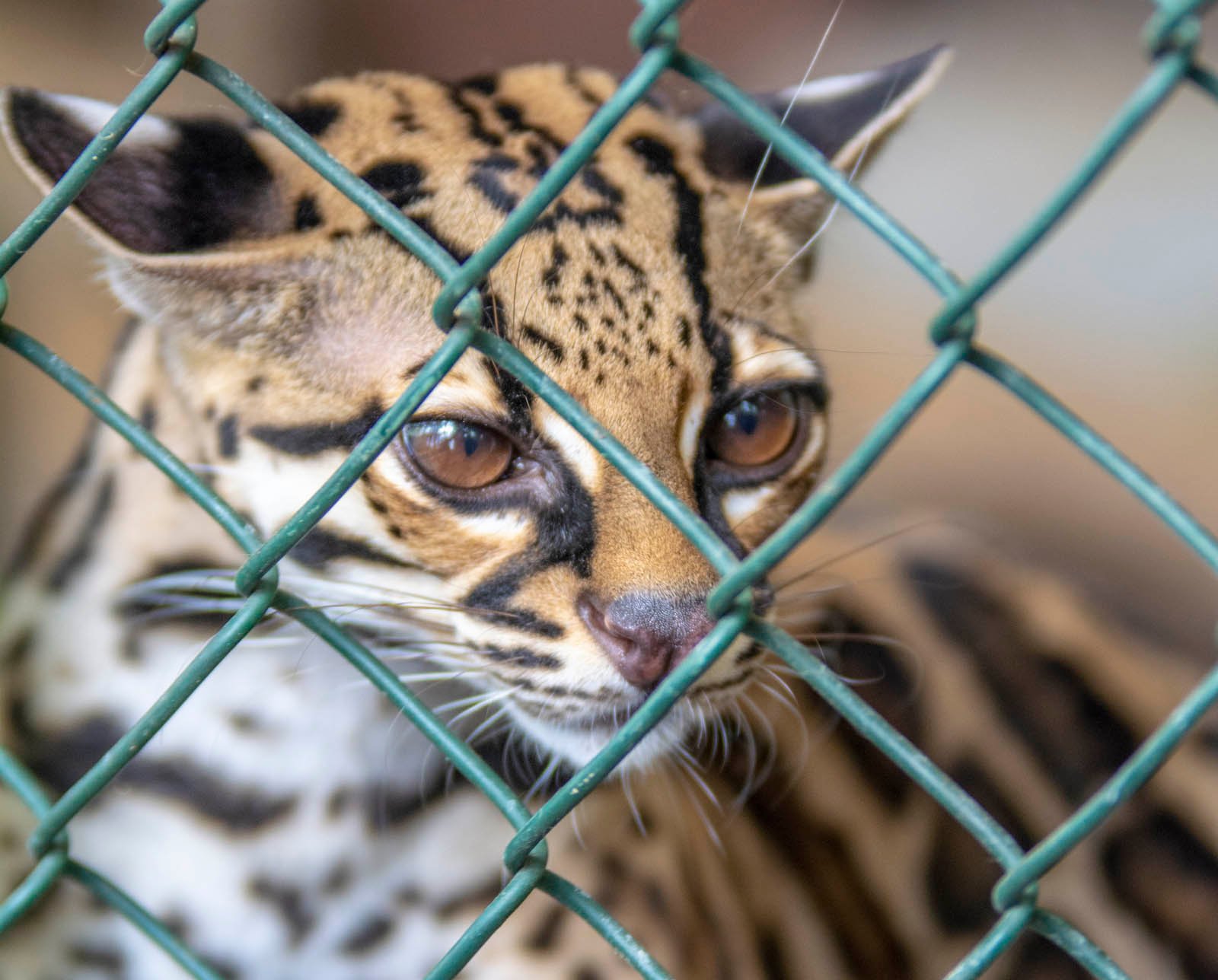
Rescuing Fauna
Text and Photos: Javier A. Pinzón
I listen to the clay-colored thrush announce the beginning of the rainy season here in Panama. Even though I live near the city, the nearby swath of forest luckily allows me the pleasure of hearing and observing wild animals from my house. However, these groves so close to the city are a death trap for the wildlife I enjoy so much. Dozens of animals are run over on the highways that intersect the forest. The victims are often mothers whose young have not yet learned to fend for themselves in the forest, thus multiplying the tragedy.
In response, biologist Néstor Correa and his wife, administrator and specialist in the care of wild neonates, Yiscel Yangúez, founded the Panamanian Conservation Association (APPC). The couple and a group of colleagues are committed to rescuing and rehabilitating wildlife in Panama. Intent on paying them a visit, I leave early in the morning, traveling through the exuberant tropical jungle of Soberanía National Park toward the town of Gamboa at the junction of Lake Gatún and the Chagres River, in the heart of the Canal Zone.
It all began in 2006 with the expansion of the Canal. Néstor and Yiscel were hired by the Panama Canal Authority (ACP) to rescue animals that would be affected by the works. The magnitude of the work in the middle of the humid tropical jungle made it necessary to design a strategy that included monitoring before, during, and after tree felling. The idea was to find and relocate the largest possible number of animals. Working side-by-side with the ACP, some one hundred people collaborated in three shifts over 21 hours every day and rescued more than two thousand animals. This work established wildlife rescue protocols in coordination with the ACP, the Ministry of the Environment, and the APPC.

The protocols, the experience, and the need to rescue animals trapped between the forest and Panama’s rapid urbanization remained relevant well after the canal expansion. In 2014, Mr. Herman Bern, owner of hotel chain Bern Hotels & Resorts, which includes the Gamboa Rainforest Reserve, offered part of his facilities for use in ongoing animal rescue in exchange for organizing informative talks for visitors and resort guests. The orphaned sloths that could not be reintroduced into the wild became the stars of this new phase.
The talks quickly became popular with tourists visiting Gamboa, attracting up to one hundred people per session. Given such success, Néstor decided to throw all his efforts into APPC. He tells us that the hotel suggested expanding the model from just talks to a visitor center —the first— featuring rescued sloths. In 2017, Herman Bern Jr., son of Mr. Bern, returned from a visit to a koala sanctuary in Australia with a plan to establish a sloth sanctuary in Gamboa.
Suitable adaptations were made and the sloth sanctuary opened. This association between Gamboa Rainforest Reserve and the APPC has allowed the rescuers to continue their work. The hotel donates proceeds from the Sanctuary to the Association, covering 50% of the wildlife rescue program’s expenses.
The sanctuary is divided into two work areas: the sloth ambassadors zone and the recovery, rehabilitation, and release zone, where other species are also treated. The ambassador sloths were rescued as tiny orphans by Yiscel and the APPC’s other specialists. Because they were raised by humans rather than their mothers, the ambassador sloths never learned how to survive in the wild. They now play an important role in educating visitors about wildlife conservation.
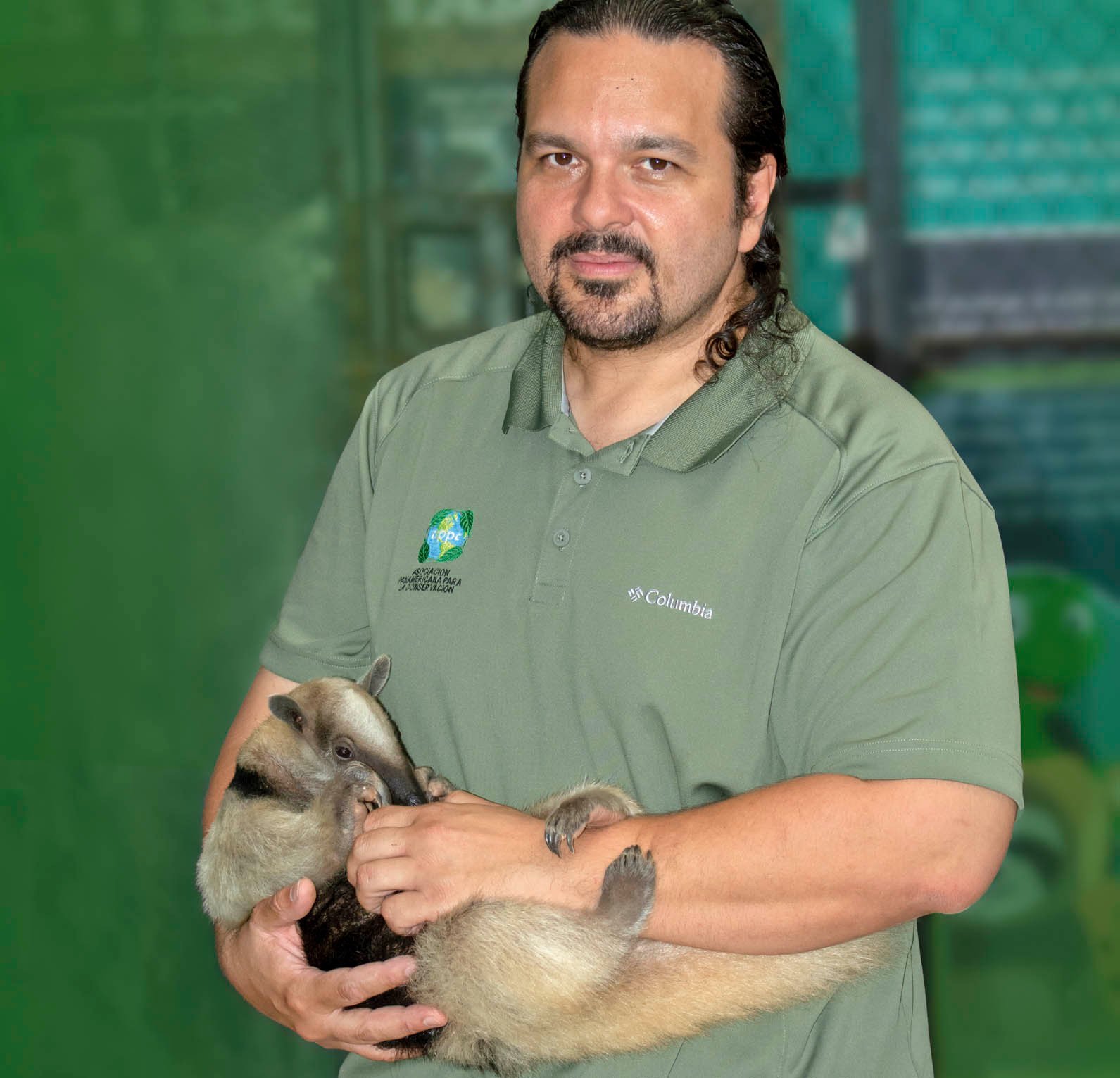
These ambassadors are ten little superheroes. They lost their freedom because of human development, but they continue to educate the public while helping raise the funds needed to help other hurt animals be released into the wild.
The Rescue
Before the agreement with the hotel, the rescuers took in an average of two hundred fifty animals a year; now, thanks to the sanctuary and the publicity it has generated, the number has almost doubled. Néstor says that rescued animals with broken legs or wings can be treated and successfully reintroduced into the forest. The main goal is to relocate the animals to areas where they will be out of danger.
The most difficult task is reintroducing youngsters into the wild. The sanctuary takes in one or two babies per day. Since the environmental police are generally the first to get calls about animals, they carry out the first phase of the rescue. The rest of the work —treating the animals’ injuries and preparing them to return to a life in the wild— is performed by the APPC in Gamboa.
The specialist explains that if you happen upon a young animal in trouble, the most important thing is to keep it warm and not feed it. To increase the animal’s chances of survival, you can give the animal a few drops of electrolytes (such as Pedialyte) and immediately take the animal to a rescue center or call the environmental police 314 9451 or write a whatsapp to 6497 7223. Néstor also stresses that if you find a baby that is “crying,” you need to let it cry, since this alerts the mother to come for her baby. You need to be patient; the mother of a sloth, for example, might take a good while to get there, but she could well be on the way. If we pick up the baby animal, it might feel comforted and stop crying, but its mother will never find it again. If there is really no sign of the mother, we can pick the baby up, keep it warm, and take it to a wildlife rescue center.
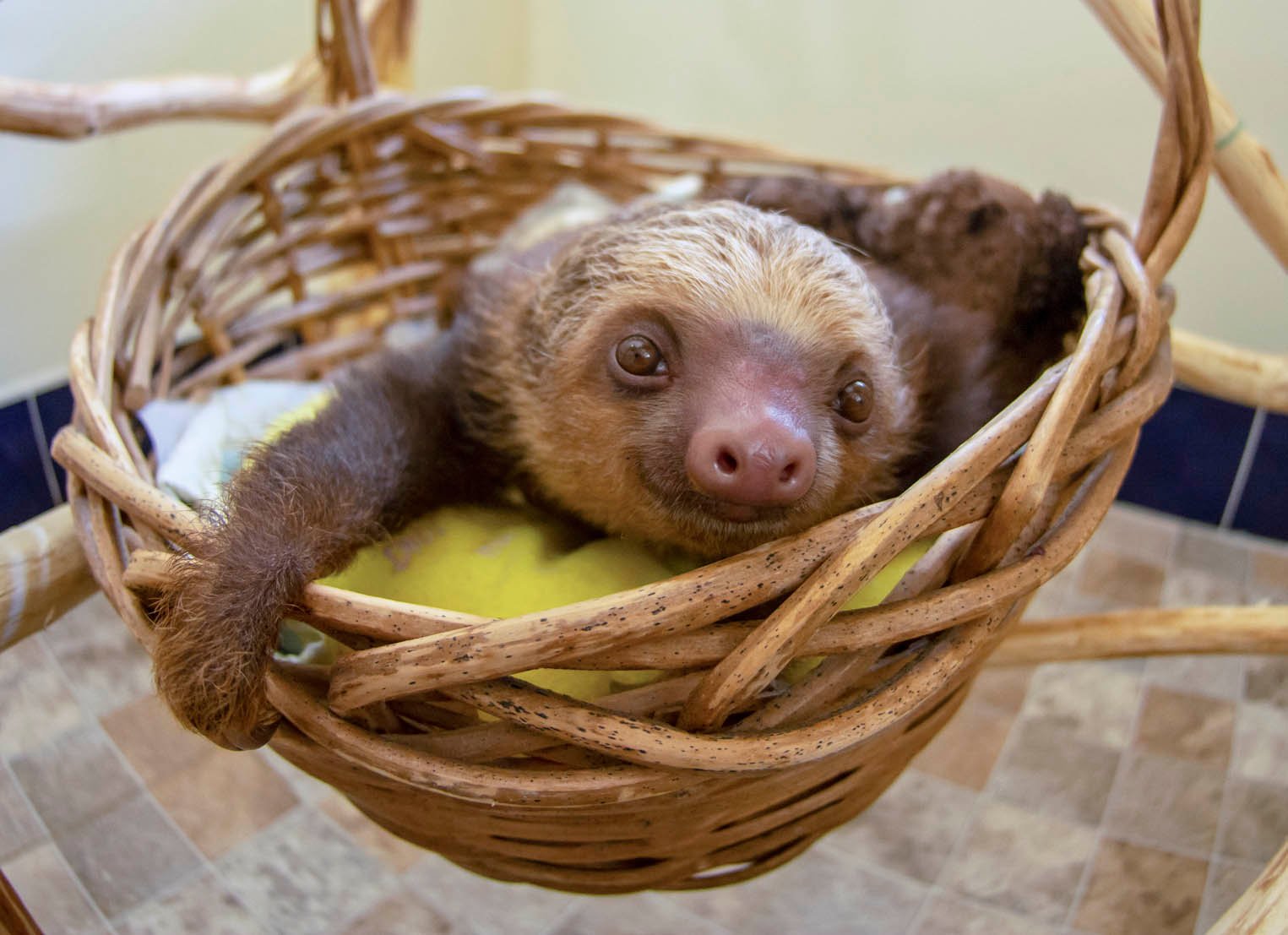
Animals that come to the center suffering from no more than minor injuries and confusion can be relocated within 24 to 72 hours. More seriously injured animals are sent for surgery at the Panama Veterinary Center with Dr. Julio Reyes, and then to rehabilitation; they are allowed to exercise and are tagged before being relocated. The cost of rehabilitating an animal is very high; for example, and eagle with a broken wing must first have surgery, and then it will need an enclosure large enough to accommodate flight during its recovery. These cages can be 10 feet high and measure a minimum of 270-370 square feet. One large enclosure (538-1076 square feet) can cost $2,000-$5,000, but they can be reused once an animal is released.
These facilities have housed toucans, opossums, hawks, turkey vultures, anteaters, capybaras, owls, titi monkeys, spider monkeys, olingos, tapirs, howler monkeys, crested goshawks, yellow-headed caracaras, agoutis, and many more, with the most frequent guests being two- and three-toed sloths, owls, opossums, squirrels, and anteaters. The mammals most often run over on the roads are anteaters and sloths: the anteater tends to stand up on two feet to defend itself when it spots car lights, and the sloth is simply slow. The easiest animals to relocate are the raptors, as long as they can hunt their food and fly well.
A curious and only recently-documented phenomenon is that of substitute mothers for caracaras and turkey vultures. Néstor and his team noticed this with a caracara chick in an outdoor enclosure. A female caracara in the forest was seen observing the chick intently. The team decided to release the bird and leave food for it near the house. When the female approached the food, the team thought she had come to steal it, but she was in fact feeding the chick. The same thing happened with the turkey vultures: the chicks are feed by adult turkey vultures who come in from the forest.
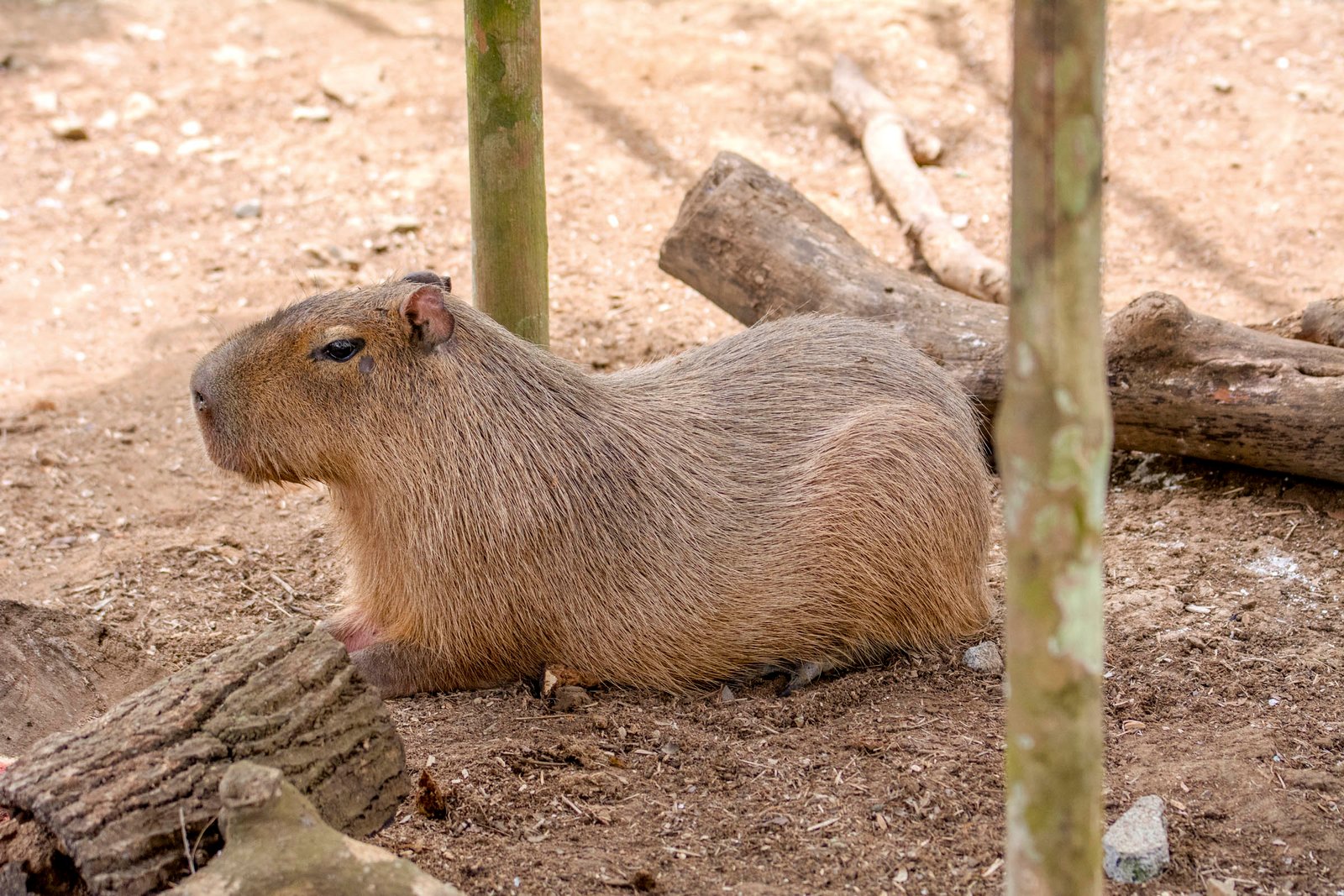
The Enclosures
Part of Gamboa’s Rainforest Reserve lodgings consisted of a series of wood houses dating to the Canal period. The houses were very costly to maintain and not much in demand. The hotel decided the houses could be put to better use as recovery facilities for the animals. The rooms —130 to 150 square feet and 7.5 feet high— are large enough for enclosures that allow the birds to jump, fly , and move around. A room is being prepared right now for an ornate hawk-eagle, and I witness this lovely bird with a broken wing being transferred to its new home. There it will exercise for a time, then it will be reintroduced into its natural habitat.
Donations from the Ron Magill Conservation Endowment (Miami Zoo) and SeaWorld Busch Gardens Conservation Fund made it possible to build another new enclosure. The APPC hopes to be able to help six to twelve month old sloths in this enclosure with adaptation and then release. Here they will undergo training for three months, after which a rope will be strung to the trees outside. The sloths, outfitted with tracking devices, can come and go as they please until they decide to move to the woods for good. The youngsters are taught to be independent in hopes of reducing the growing number of babies in captivity.
Since 2006, the Association has also received support from the SeaWorld & Busch Gardens Conservation Fund. Rob Yordi, Executive Director of the Conservation Fund, has stated that “The dedication, passion and knowledge that the APPC team shows is one of the many reasons why we are pleased to support the organization. We know that our support (consisting of funds, technical staff, and field staff) is being used in the best possible way to benefit the animals that arrive for the care of the APPC team from all over the country.”

A Second Chance
A mother sloth —with a baby clinging to her— fell on her head and died. George, a building supervisor who witnessed the event, put the baby in his car and took it to APPC. The baby is now one of the ambassadors.
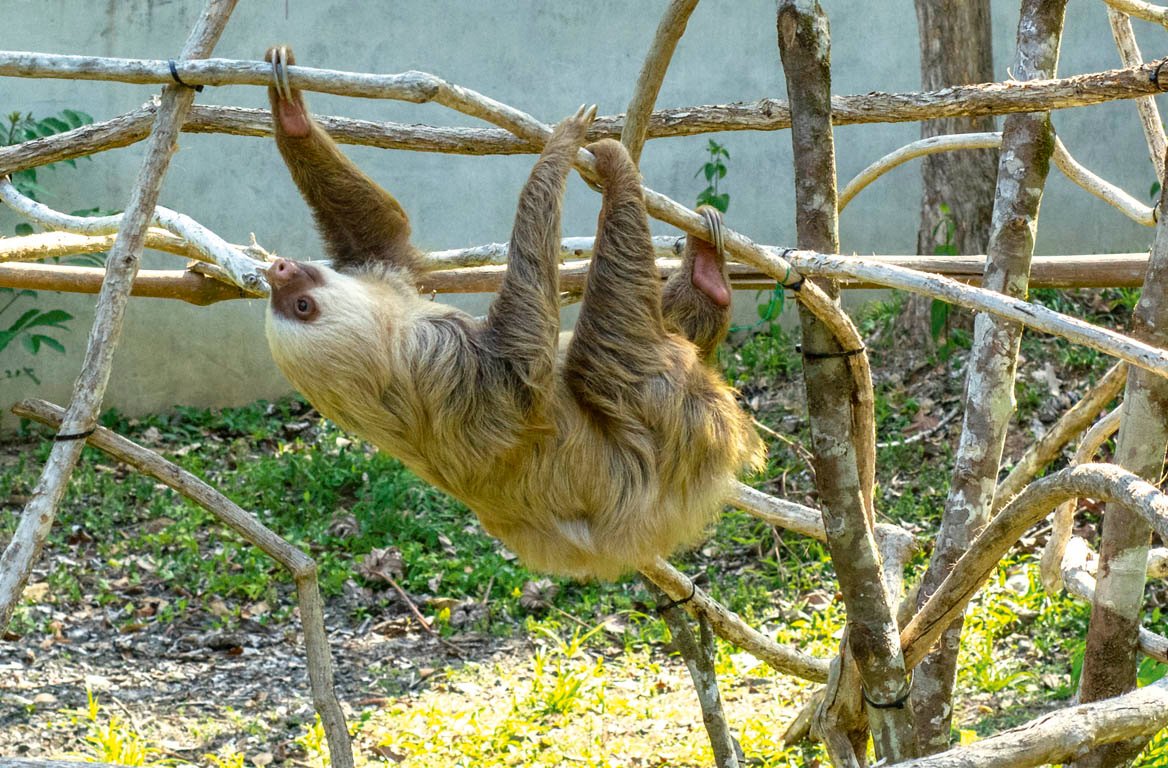
Lindi and Salomé
Anteaters Lindi and Salomé were orphaned when their mothers were run over by cars in Santiago and Aguadulce. Both are less than a month old. They have become tame and friendly at the sanctuary and can no longer live in the wild.
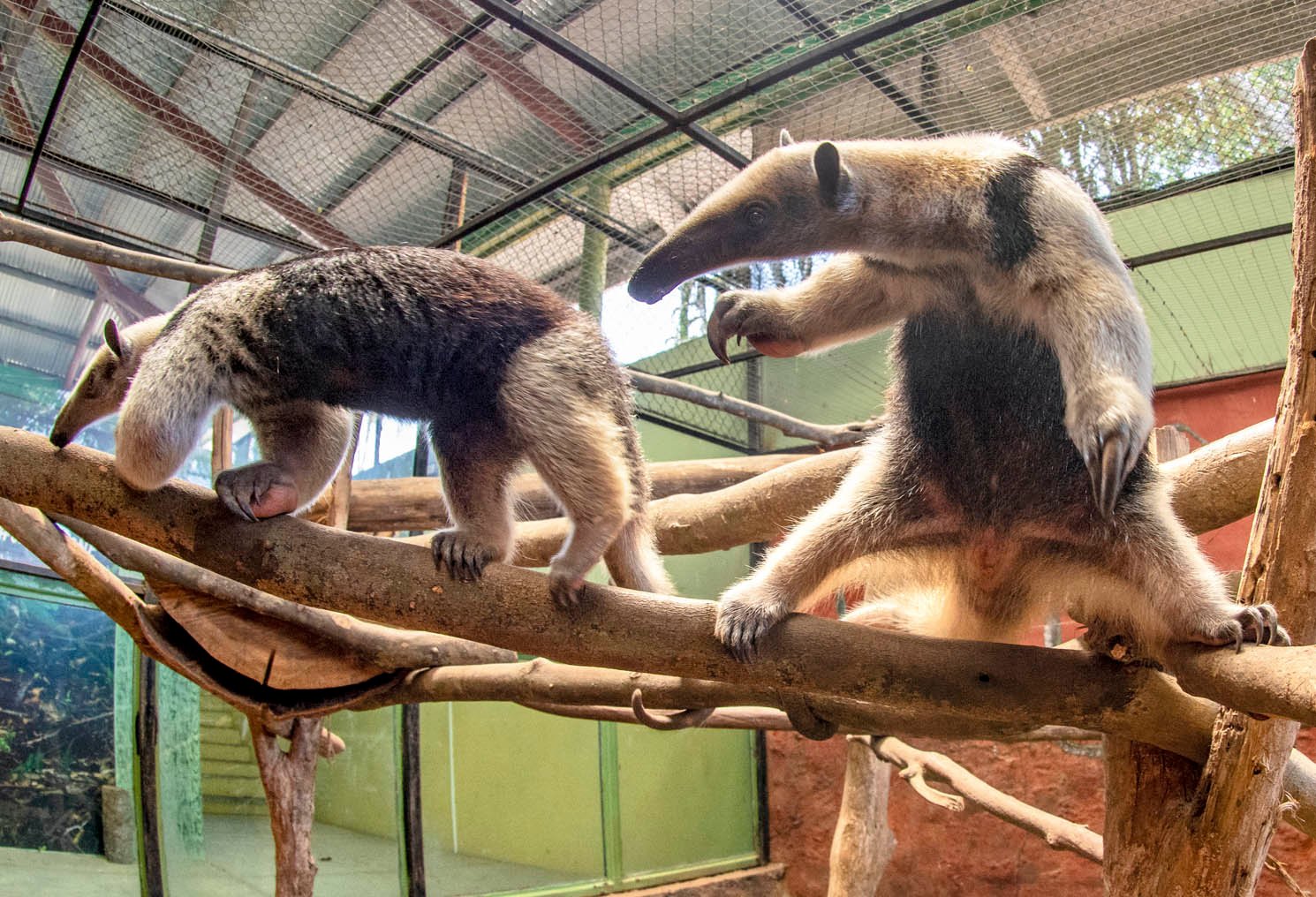
Mika
Mika is a female ocelot. Her mother was killed so that the baby and her brother could be sold when they were just a week old; the brother did not survive.
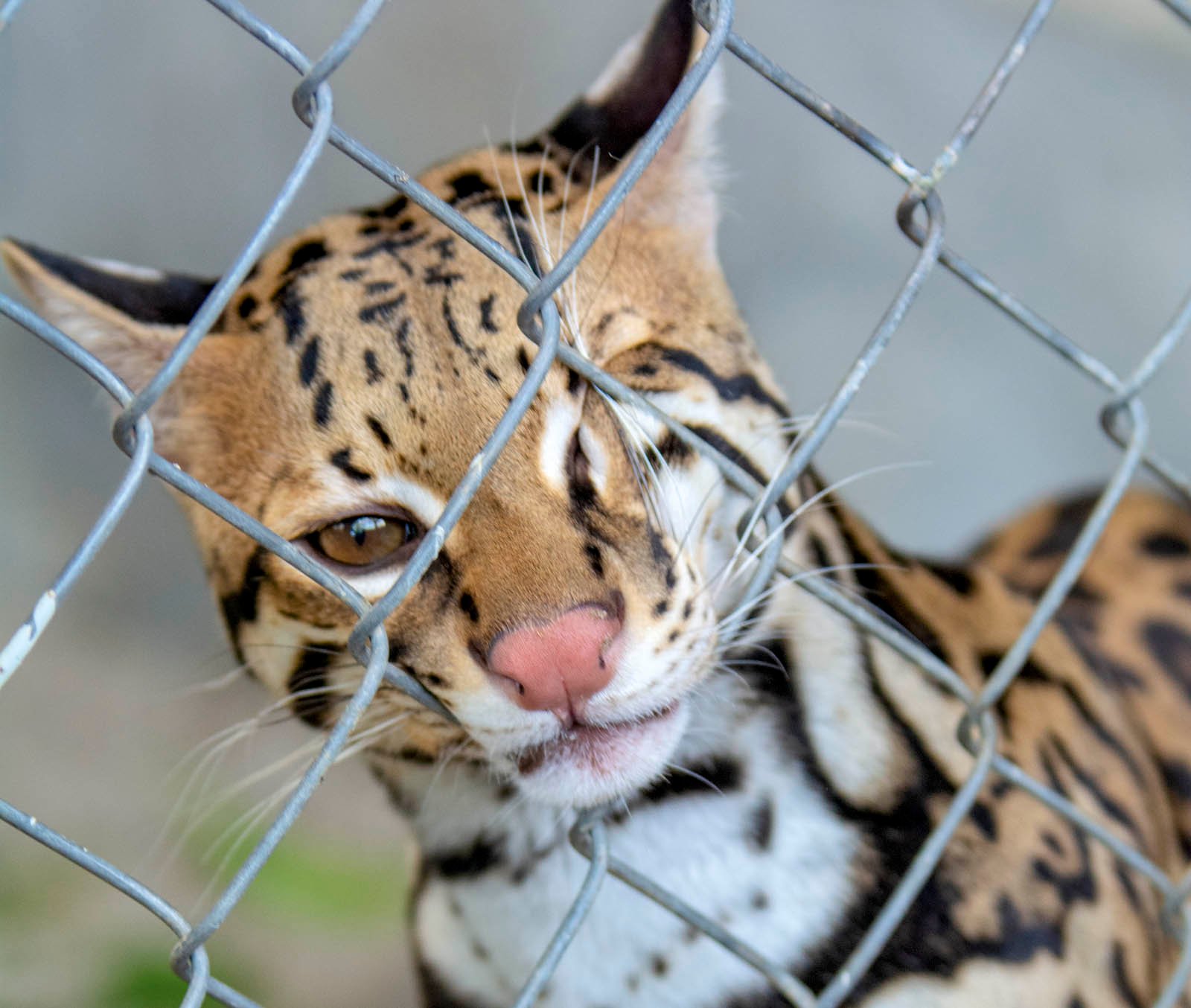 Wakanda
Wakanda
Wakanda is a 7-month-old jaguarundi who was found just days after birth. His mother ―alive or dead― might have been nearby, but the people who rescued him did not wait to find out. Now it is very difficult to reintroduce him into the wild, since he has grown accustomed to people.
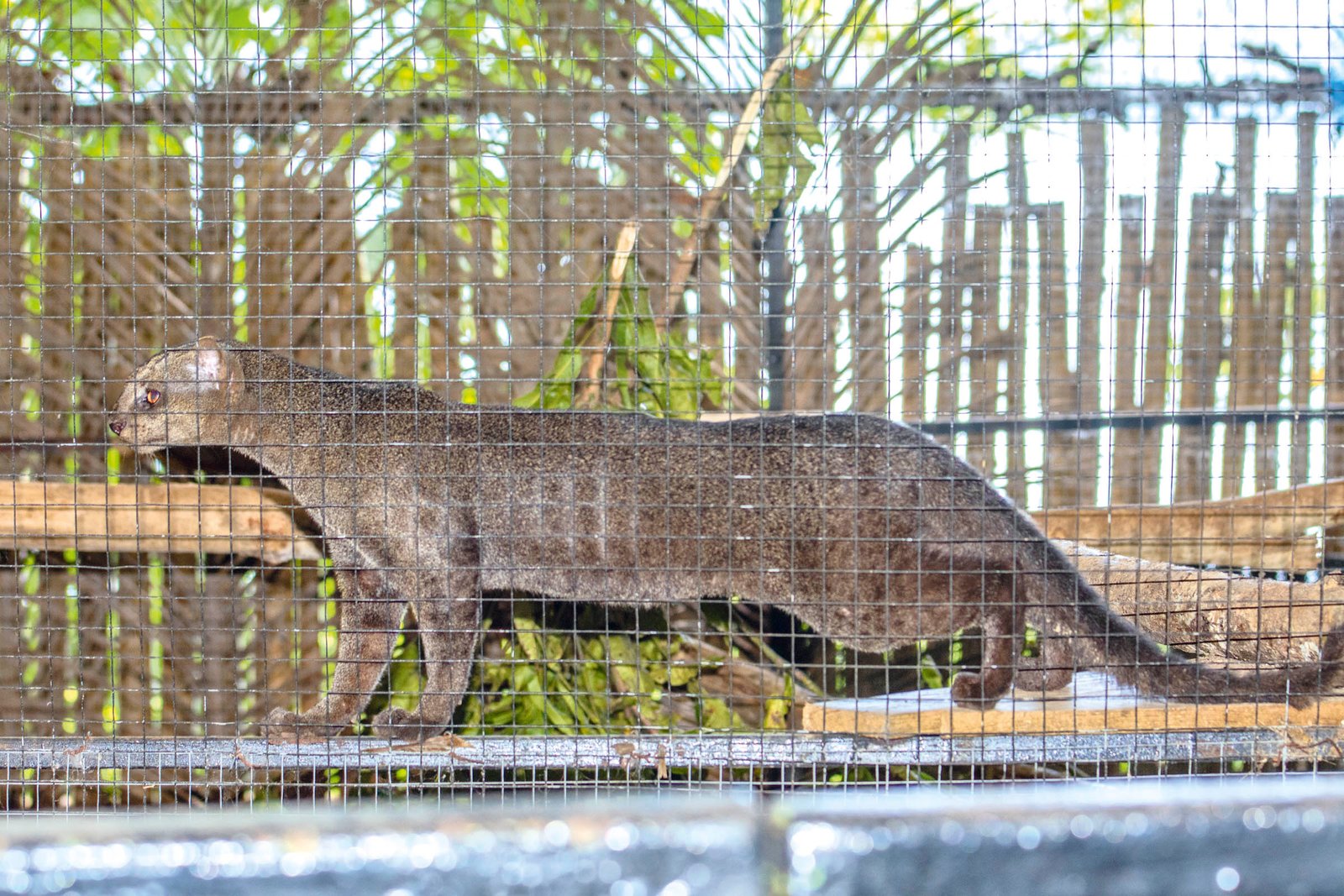
Tapir
The mother of a tapir was hunted and eaten in Darién when her baby was barely two months old. The Bairdii or Central American tapir is highly endangered – there are fewer than five thousand in Panama and México.
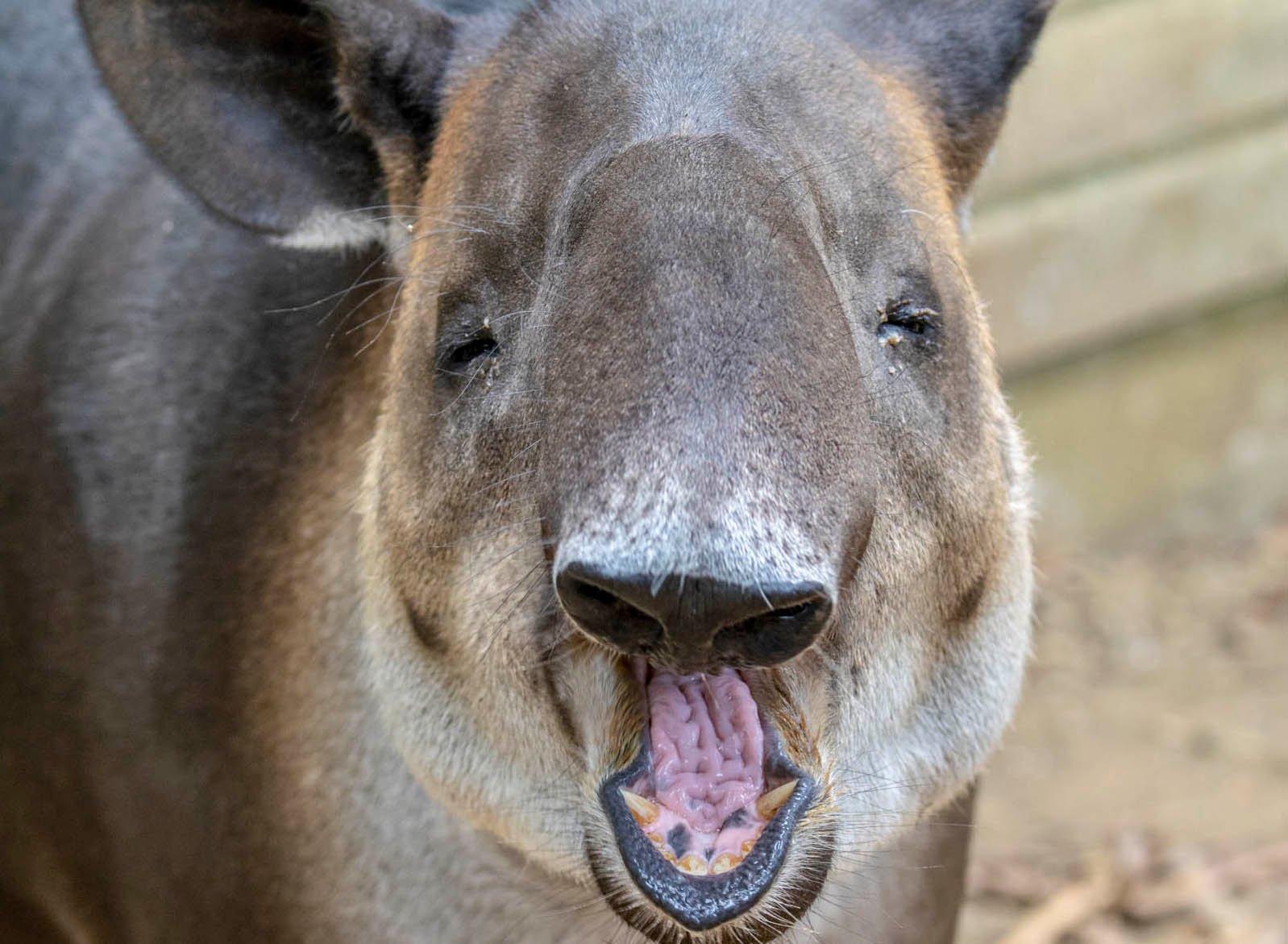
George
George the ocelot represents a case of illegal trafficking; his mother was killed and he was rescued at the age of three months when someone tried to sell him.
There are also happy endings here
The majority of animals that reach the center are reintroduced into the wild. The capybara will be released soon, after a period of isolation during which it learns to be independent. The team hopes to insert it into the group of capybaras that lives in the Chagres River.
Sloth
A sloth that hurt its foot by falling from a tree during a fight had a screw inserted into the bone and the animal is now in rehabilitation. It can already exercise and the screw will soon be removed. As soon as it is ready, it can follow the rope to freedom outside the enclosure. This will be another of the many happy endings that play out in the sanctuary day after day.
